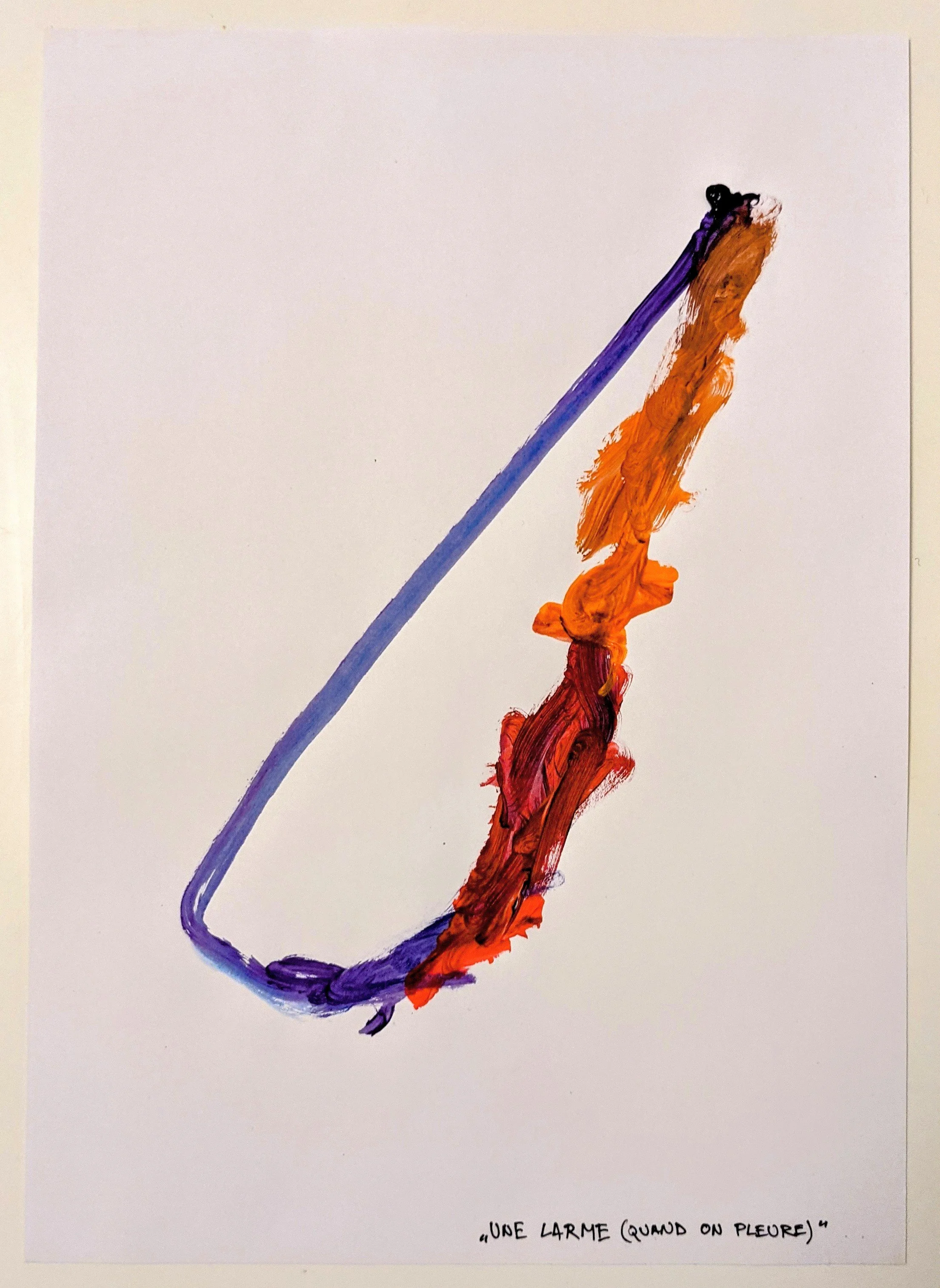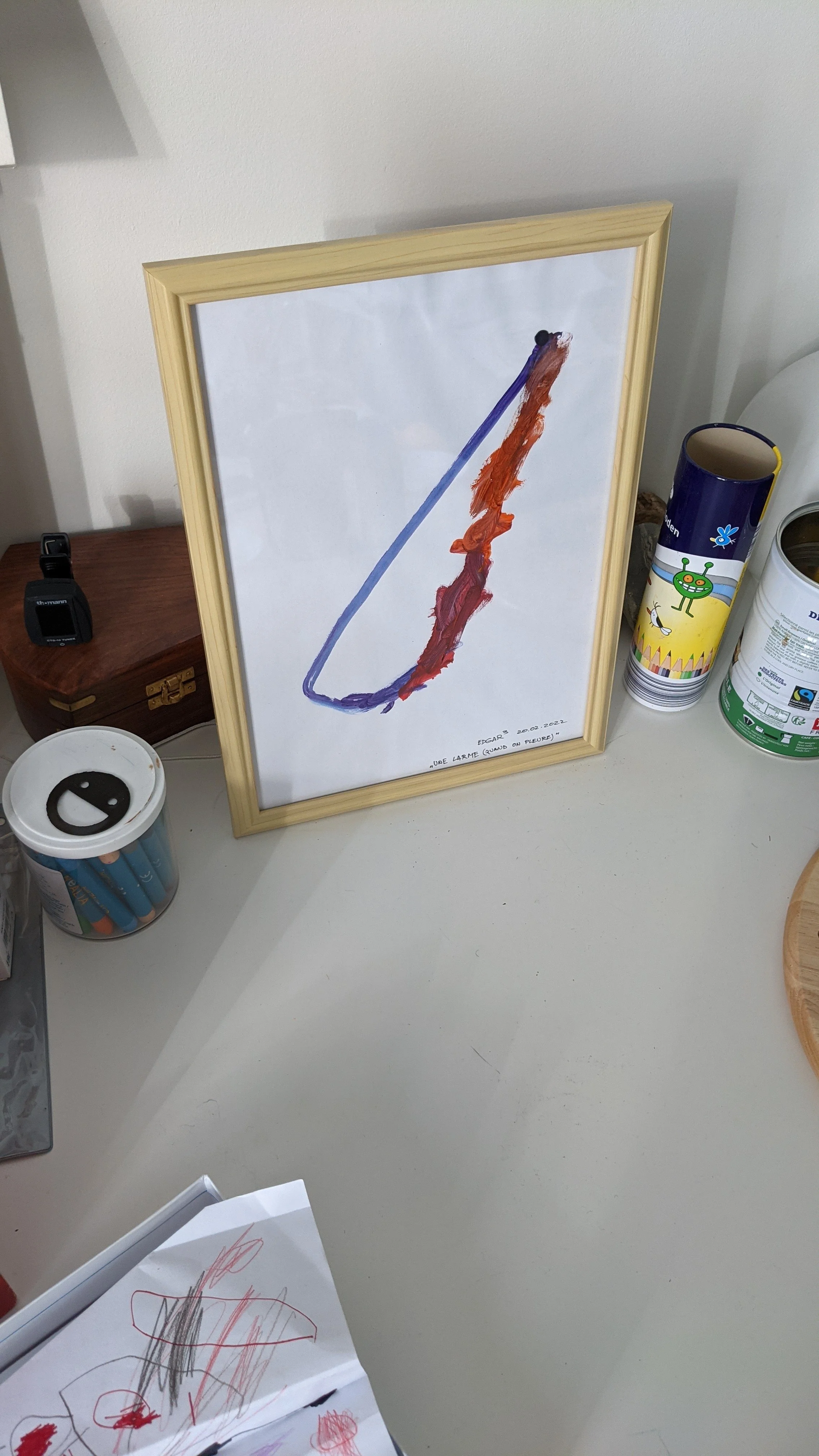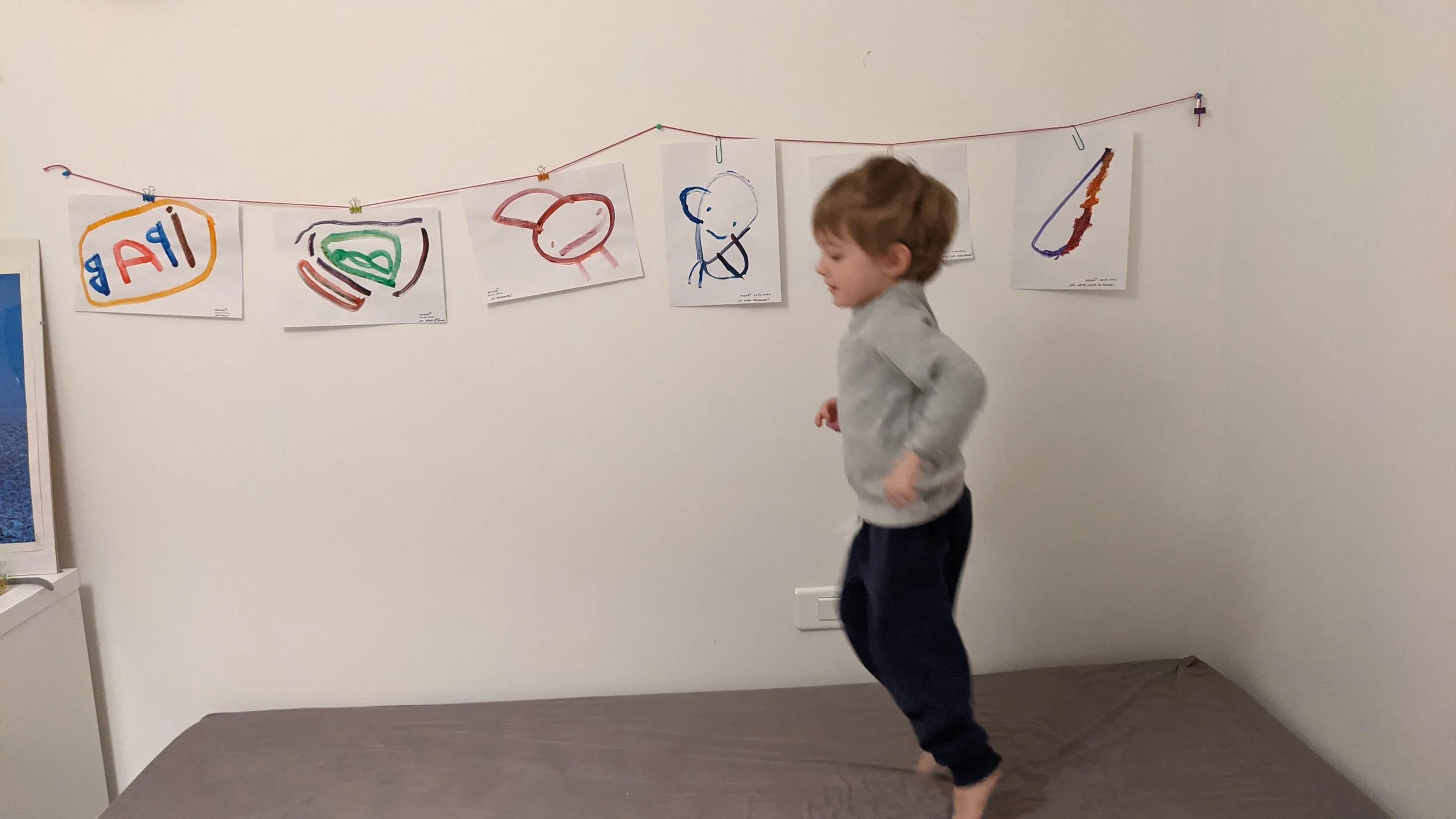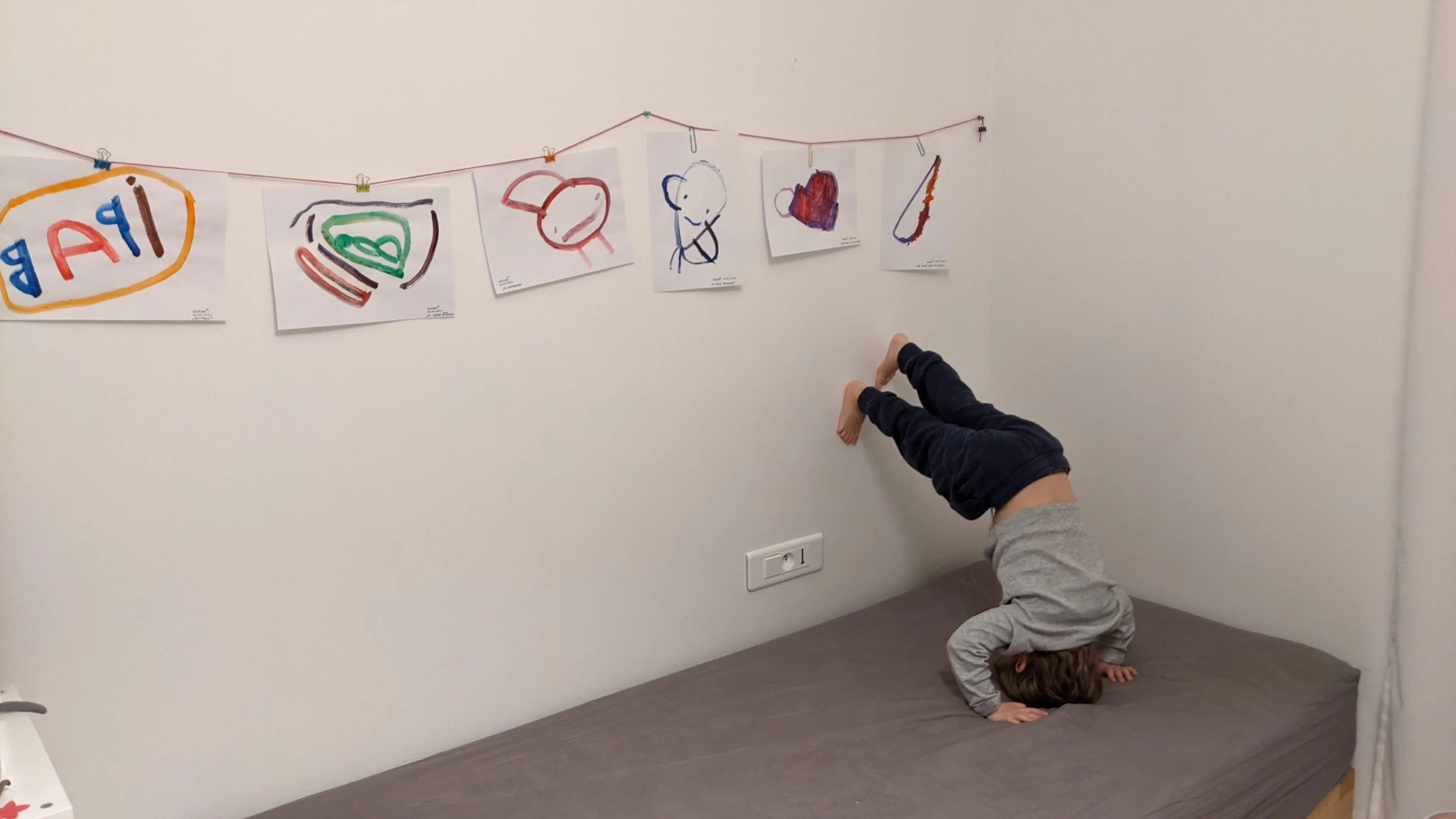 Image 1 of 5
Image 1 of 5

 Image 2 of 5
Image 2 of 5

 Image 3 of 5
Image 3 of 5

 Image 4 of 5
Image 4 of 5

 Image 5 of 5
Image 5 of 5






" A tear, or a bomb " - SOLD to a private collection
The Story of “Une larme (ou une bombe)”
Edgar painted this piece when he was three years old, during the same period as “Un bébé dans le ventre”.
That day, he made a long, narrow, descending shape with a sudden, bright spot at its base. The gesture was simple, but intense — almost like a drop falling too fast.
When his father asked him what it was, Edgar said:
“Une larme… ou une bombe.”
A tear… or a bomb.
At three years old, he had no clear understanding of war or violence.
But at that time, the news often spoke about the war in Ukraine.
Children absorb the world without filters — sounds from the TV, fragments of conversations, the tone of adult voices. Edgar didn’t know what a bomb truly was, but he felt something: tension, fear, falling, weight.
In this painting, the shape could be both:
A tear, stretched by gravity, about to hit the ground.
A bomb, suspended in the moment before impact.
The ambiguity is what gives the piece its emotional power.
The work becomes a quiet reflection of how a child senses the world: not through facts, but through impressions, atmospheres, and unspoken emotions.
When an architect from Romania saw the piece, he immediately connected to its dual nature — fragile and violent, soft and sharp.
“It holds the purity of a child’s line and the weight of an adult world.”
Today, the artwork hangs in a private collection, surrounded by rare contemporary objects.
It remains one of Edgar’s most haunting early works — a picture of innocence brushing against the shadows of the world.
The Story of “Une larme (ou une bombe)”
Edgar painted this piece when he was three years old, during the same period as “Un bébé dans le ventre”.
That day, he made a long, narrow, descending shape with a sudden, bright spot at its base. The gesture was simple, but intense — almost like a drop falling too fast.
When his father asked him what it was, Edgar said:
“Une larme… ou une bombe.”
A tear… or a bomb.
At three years old, he had no clear understanding of war or violence.
But at that time, the news often spoke about the war in Ukraine.
Children absorb the world without filters — sounds from the TV, fragments of conversations, the tone of adult voices. Edgar didn’t know what a bomb truly was, but he felt something: tension, fear, falling, weight.
In this painting, the shape could be both:
A tear, stretched by gravity, about to hit the ground.
A bomb, suspended in the moment before impact.
The ambiguity is what gives the piece its emotional power.
The work becomes a quiet reflection of how a child senses the world: not through facts, but through impressions, atmospheres, and unspoken emotions.
When an architect from Romania saw the piece, he immediately connected to its dual nature — fragile and violent, soft and sharp.
“It holds the purity of a child’s line and the weight of an adult world.”
Today, the artwork hangs in a private collection, surrounded by rare contemporary objects.
It remains one of Edgar’s most haunting early works — a picture of innocence brushing against the shadows of the world.